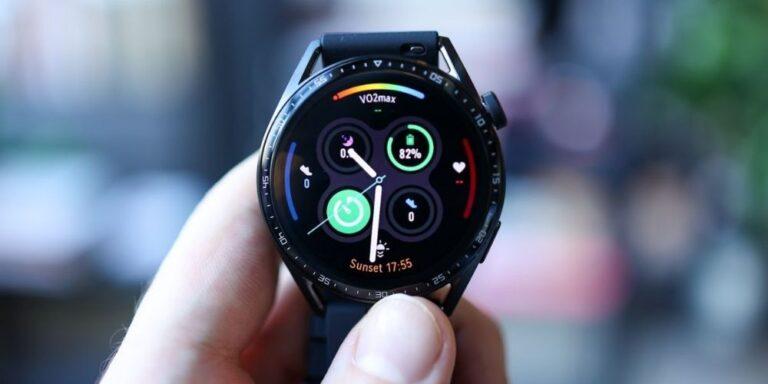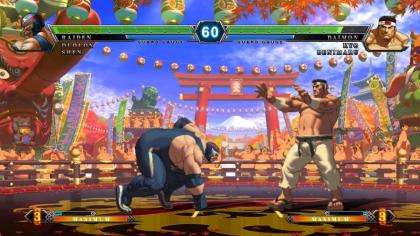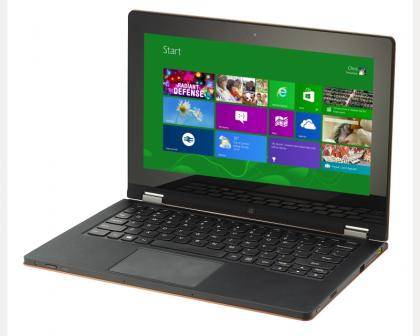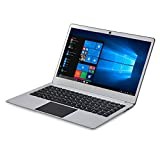Is buying a cheap webcam on Amazon worth it?
You can usually tell when there’s a high demand for something when you start seeing numerous knockoffs and dupes from internet-based independent sellers and retailers popping up on Amazon. At the height of the pandemic, with everyone on Earth seemingly looking for ways to connect with others without leaving their homes, webcams had their time in the spotlight. Naturally, lesser-known manufacturers and even unknown brands had to get in on the action.
This proved to be a blessing then, especially because big-name manufacturers like Logitech and Microsoft couldn’t keep up with the demand. Most of the best webcams were sold out for months, leaving a chunk of the population seeking alternatives. Enter the new breed of webcam brands from Amazon, which not only helped ease the burden but also offered cheaper options.
Now that webcams from trusted manufacturers are mostly back in stock, is it still worth buying a cheap webcam on Amazon? Let's find out.
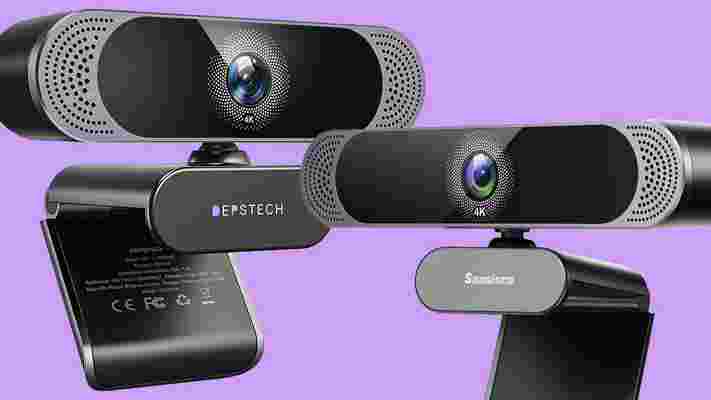
Cheap webcams: low price may not be what it seems
In general, webcams from unknown Amazon brands with names that look like a bunch of letters randomly strung together (HZQDLN and DEPSTECH) are cheaper than their big-brand counterparts.
You’ll find, for example, that a 1080p webcam from XPCAM or even the better-known NexiGo would set you back at least half of what you’ll pay for were you to get it from Logitech, Microsoft or Razer . In fact, they cost about the same as Logitech and Microsoft’s 720p offerings. Not only that but these webcams are often discounted on Amazon, allowing you to save even more.
That’s excellent news, especially for the average consumer simply looking for a functional webcam that won’t set them back more than $50/£50.
When you start to go into the realm of 4K webcams, that rule doesn’t always apply. Sure, you’ll find sub-$100 options like the DEPSTECH DW49 and the Sansisco 4K . But, you’ll also see many “cheap” 4K webcams that either cost just as much as their big-name counterparts or are only $20 or so cheaper. The WyreStorm Focus 210 Webcam 4K and the NexiGo N950P are good examples.
If you’re going on Amazon to find a cheap webcam, it might be worth exploring what Logitech and Dell have to offer first, especially if you’re using that webcam for work or business, which we’ll discuss more later.
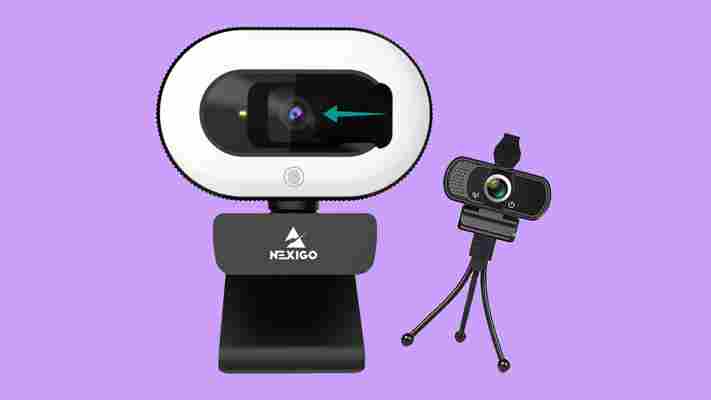
The battle of 1080p webcams
Looking in the budget aisle already shows that you want to spend as little as possible, but that doesn’t necessarily mean that you’re also willing to sacrifice features or picture quality. Whether buying a cheap webcam on Amazon is worth it or not largely depends what you’ll be using it for.
If you’re looking at cheap webcams because you want something that’s good enough for video calls with friends and family, then the combination of their cheap price tag, 1080p resolution and positive reviews on Amazon make them worth considering, even if you’re not familiar with the brand. Same for remote workers who don’t need anything fancy, just a working webcam for those daily standups and meetings with the team.
The XPCAM FHD Webcam , for example, enjoys a 4.3 out of 5 rating on Amazon and mostly positive reviews from verified customers praising it for its build, easy set up and included accessories (tripod and privacy shutter). Many have also praised it for its good picture quality.
Meanwhile, the NexiGo N60 has a higher 4.4 out of 5 rating and more than 21,000 reviews. Verified customers applaud not just its easy installation, but also its picture quality and auto focus feature. One reviewer even said that its picture quality is better than that of his iMac .
Even if you need something with special features like a ring light or a noise-cancelling mic, it’s worth scouring Amazon for a cheap option. The NexiGo StreamCam N930E , for example, comes with both those things while still costing less than any 1080p webcam Logitech has on offer currently.
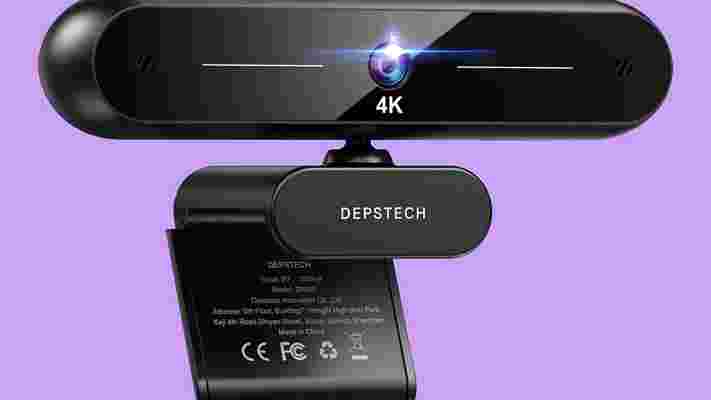
Going 4K
People who spend money on a 4K webcam are typically using it for business. And, by that we mean everyone from owners of local brick-and-mortar establishments and content creators to those with high positions in financial institutions. After all, 4K webcams are still pretty expensive and most people do not need that ultra high-definition resolution for their video calls.
If you’re considering getting a 4K webcam for your business, you might be better off going with a trusted brand. That’s because you don’t really know anything about those vendors on Amazon, which means you don’t know whether or not they themselves are manufacturing those webcams and if they’re even developing the firmware being used. When you’re dealing with sensitive information, that firmware could easily be used (and that webcam could easily be hacked) to obtain that information.
Those cheap 4K webcams might be $20/£20 or $30/£30 cheaper, but there’s also a higher risk of a security breach that might cost you even more money – or worse, your actual business.
If you’re just getting a 4K webcam just because you want super sharp picture quality when on your personal calls, something like the DEPSTECH DW40 or the Sansisco 4K Webcam should suffice. However, if you’re dealing with sensitive or classified information that might be used against you, it’s not worth the risk – even if there are a few things you can do to minimize that risk.
E-bikes and cardio: everything you need to know about staying fit on an e-bike
Cycling is having a moment. Interest in road cycles and mountain bikes is higher than ever, and even though the waiting lists for bikes that built up at the height of the coronavirus pandemic are starting to shorten, there's still huge interest in both conventional and electric bikes .
E-bikes are essentially traditional bicycles with electric motors. The e-bike trend is a few years behind the electric car trend, which truly took off with Tesla's introduction into the consumer car market around 2013.
Since then, more and more consumers have decided eco-friendly travel is a priority, opting for e-bikes for commuting and errands. In the mountains, buyers are realizing that e-bikes can take the pain out of uphill mountain bike climbs and make the rides more fun.
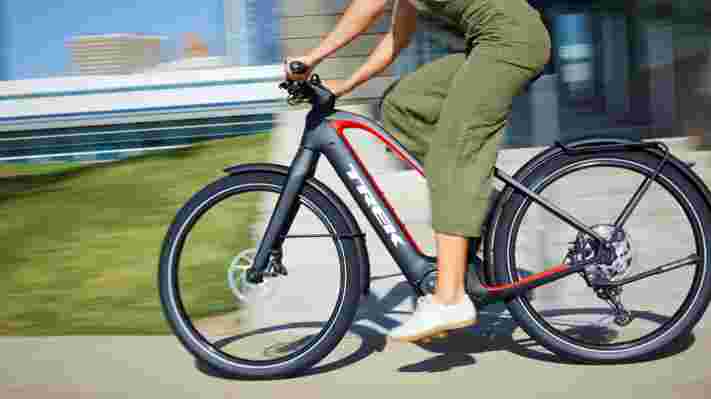
But athletes who cycle for the cardio or workout benefits are still likely to sneer their noses at e-bikes, often seen as 'cheating' in the minds of traditional cyclists and mountain bikers. Unfortunately for those old-guard cyclists, that ableist mindset is anything but correct. With the proper knowledge and technique, nearly anyone can get a fantastic workout on an e-bike at any ability level. Here's how.
How do e-bikes work?
Unlike a regular road or mountain bike, an e-bike has an electric motor to help riders propel themselves. Depending on the bike, the rider can choose to avoid pedaling entirely or use the motor to adjust the level of assistance on uphill climbs or long roads. With a non-motorized bike, uphill pedaling can be extremely tiring, and it can feel like you're pushing extremely hard to keep the wheels spinning, even in the lowest (easiest) gear.
According to Lauren Butler, the city and kids product marketing manager for Trek Bikes , riding an e-bike generally feels similar to a traditional cycle. "Your riding experience feels like the same natural experience of riding any other bike, except with extra power, you can ride farther and faster."
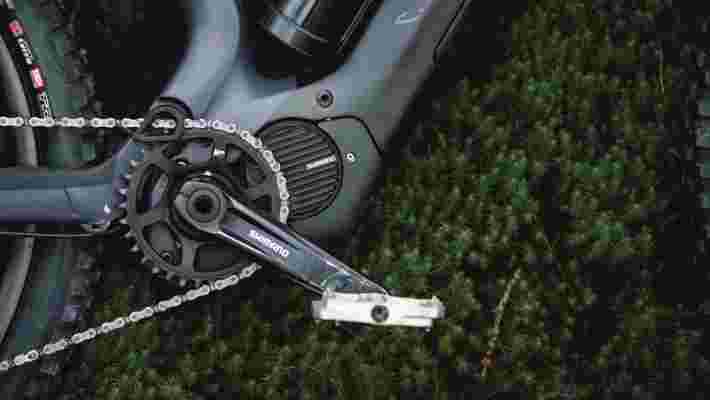
E-bikes have an electric motor powered by a rechargeable battery. Depending on the battery's size, it could take anywhere between two and six hours for a full charge. While riding, a handlebar display lets the rider see and adjust the motor's level of assistance.
For pedal-assisted bikes, the rider must pedal for the motor to work. On an e-bike with a throttle, the rider doesn't need to pedal (similar to a scooter). Some bikes offer both options, but many countries class those with a throttle as mopeds or motorbikes rather than bicycles.
What are the benefits of biking?
Biking is one of the best cardio workout options for the average person. With low-to-no impact (save for crashes,) biking uses all your major muscle groups, improves joint mobility, and, of course, gets your heart rate up and your lungs pumping, especially when climbing uphill or navigating obstacle-ridden terrain.
According to Dylan Renn , a full-time mountain bike coach and former professional mountain bike racer in Northern California, mountain biking is generally more difficult: "A mountain bike is more demanding and requires more strength, whereas on an e-bike, the motor assists with the strength."
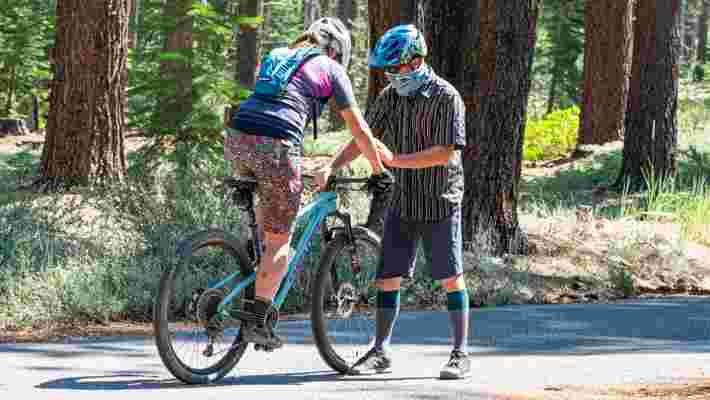
Renn says his requests for one-on-one and group e-bike coaching this year have skyrocketed, paralleling sales reports from e-bike retailers. He thinks traditional bikes and e-bikes can work in parallel with one another, ideal for riders trying both.
"The e-bike lets you operate on a level higher than your own ability because of the power input. So if you can master the skills on an e-bike, your overall mountain bike skills will improve."
Why are people choosing e-bikes?
In a word, ease. In three words, ease, simplicity, and recovery. Riding an e-bike is almost always going to be easier than riding a bike that requires 100 percent human-power. It puts longer and more challenging trails within the rider's wheelhouse and can make riders feel more confident knowing backup power is available if their muscles or lungs hit a metaphorical wall halfway into their rides. But according to Devin Riley, US director of marketing for Canyon Bicycles , it's not just out-of-shape riders who are choosing e-bikes.
"While we've seen strong e-bike demand from adult riders seeking to either replace a car or keep doing strenuous Saturday trail rides, there also is a generation of younger mountain bike riders who are interested in the extra range and power of an e-bike," he says.
As a former competitive cyclist, Riley says he's used his e-bike to compliment his now-hobby, taking his e-bike out on muscle recovery days, or when he wants to do a third lap but his body only has the energy for two.
According to Trek Bikes' Butler, riders often choose e-bikes to explore new areas they couldn't reach on their own, covering more distance in the same amount of time. E-bikes also allow riders with physical limitations to access otherwise unreachable terrain, and allow riders recovering from injuries to bike earlier in their recovery.
"If you can't ride like you use to, e-bikes are an awesome solution," says Butler. "You're still getting plenty of exercise and enjoying being outside, but the assist makes it more possible and relieves pressure on your joints and back."
E-bikes can also make it easier for people of different ability levels to ride during cycling trips. And, of course, e-bikes are better for the environment than cars. According to the League of American Bicyclists , 60 percent of trips less than one mile long are made in vehicles. E-bike assists may allow some of those drivers to make those trips by cycle instead, helping to reduce their overall CO2 emissions.
So how do you stay fit on an e-bike?
So if traditional mountain bikes require more effort and power, should people looking for a better cardio workout opt to forgo the motor? Not necessarily, says Riley. "You can get the same cardio workout on either," he says. "It all depends how fast you turn the pedals and how much you're asking the e-bike to assist your efforts."
Renn says that e-bike riders should be aware of their heart rate while riding. "One does gain the cardiovascular benefits from an e-bike, but it doesn't feel as taxing. Your heart rate is 9-10 heartbeats per minute lower on an e-bike versus mountain bike when riding at your high-intensity zone. So it's the same effort, but lower heart rate zones in an e-bike."
While a lower heart rate can slightly decrease the number of calories burned in a period of time, it can also give riders the energy they need to ride for longer, which ultimately burns more calories than a shorter ride.
Riley suggests riders use the e-bike to complement a traditional ride, rather than entirely replacing it. E-bikes, he says, can help riders access new trails; for example, an urban rider could use the e-assist to ride outside their city limits, then turn the level of assist down once they start their workout-focused ride.
He also points to the ability to customize workouts with an e-bike: if you need a rest day for your quads, turn up the assistance level. And if it's really a core workout you want, use the e-assist to shuttle up the trail before getting in a core workout during the ride down (most technical riders stand while downhilling.)
Ultimately, the degree to which any e-biker, road cyclist, or mountain biker can train and work out depends entirely on the user. Mountain bikers can take it easy by walking up steep terrain, and putting an e-bike on full assist mode is unlikely to get most people's heart rates into fat-burning mode.
But the idea that e-bikes are 'easier' is a misconception – when properly used, they can both extend your workout and enable you to spend more time on your bike, even on recovery days. And with travel likely suspended for at least another few months, it's an excellent time to strap on a helmet and get in a few miles on two wheels.
How coffee makers work
Anyone who has one of the best coffee makers will know what a delicious cup of java tastes like, but knowing how coffee makers work is another thing altogether. There are so many different machines on the market and each operates slightly differently, but here we’re finding out exactly how each coffee maker works and what you can use each one for.
Whether you have an espresso machine , a single-serve coffee maker or a bean-to-cup coffee machine , all coffee makers operate in different ways and each one has different capabilities. Espresso machines are designed to create concentrated shots of coffee but some of these machines have steam wands so that you can create milk-based coffees such as a latte or a cappuccino.
Pod coffee machines (another name for single-serve coffee makers) are simpler to use but can still create a variety of drinks depending on which pods you buy. Bean-to-cup machines are easier still because they take care of every step in the coffee-making process by grinding the beans, frothing milk, and creating a fully-prepared coffee. There are lots of different types of coffee makers and here’s how each works.
How do single-serve coffee machines work?
Single-serve coffee machines, which are often referred to as pod coffee makers, can only dispense one coffee at a time so they’re not ideal if you want to make lots of coffee for lots of people at the same time. Pod machines use capsules that are packed with concentrated coffee ground. Coffee pods are the name given to K-Cups, Nespresso pods, and those flat discs of coffee that slide straight into the machine.
Pod coffee machines normally have a water tank at the back which needs filling up before you can get started. For the best results, filtered water is recommended especially if you live in an area with hard water.
The coffee machine then takes the water from the tank so that a heating element can warm up the water. From here, the piping hot water will pass through the coffee pod you’ve placed inside the machine (normally after it has pierced a small hole at the top of the capsule), and concentrated coffee will then drip into the cup you’ve placed below it.
However, rather than chucking the used coffee capsule in the garbage - it's estimated some 56 billion single-serve pods end up in landfill each year , find out how to recycle Nespresso Pods , along with other brands of coffee capsules, to make using this type of coffee machine more sustainable.
How do espresso machines work?
In the same way that pod machines have a water reservoir, espresso machines also need water in order to work. Professional espresso machines are normally plumbed into a mains water supply, but for home use, espresso machines have a water tank. The same idea of using filtered water also applies to every type of coffee machine, and this isn’t only because it affects the taste, but because it helps to minimize calcium build-up in the machine’s pipework.
Espresso machines create strong, concentrated shots of coffee but in order to get the water from the reservoir and through the ground coffee, they require a powerful pump. The power of these pumps is measured in bars and the industry standard for an espresso machine pump is nine bars, although you can get models with an even higher bar.
Having the power to push water through the ground coffee is all well and good but this won’t heat the water up and that’s where a boiler comes in. Some espresso machines have just one boiler that heats up the water and others have two boilers so that water and milk can be heated simultaneously. You can also buy fancier machines that heat the water and then store it so that it’s ready for when you want to make another drink.
Different espresso machines will offer different levels of control over the temperature of your water. More affordable machines sometimes don’t even offer the option to adjust the water temperature, whereas, more expensive models have digital controls that allow you to adjust the temperature.
For espresso machines with dual boilers, the water is heated to different temperatures. One boiler will heat water so that it’s just the right temperature for pushing through the ground coffee to make a good shot of espresso, the other boiler will heat the water so that it’s hot enough to create steam ready to travel down the steam wand to froth milk.
Once the boilers have heated the water to the optimum temperature, the water then drips through the group head and through the portafilter, which is the basket that holds the coffee and sits in a handle that you twist into place.
You can find out in-depth how to use an espresso machine in our article.

How do bean-to-cup coffee machines work?
Just like the espresso machines, bean-to-cup coffee makers, which are sometime also known as automatic coffee machines, push pressurized hot water through a disc of ground coffee to create a short, intense espresso. However, this whole process is handled by the machine; from grinding the beans and compressing the grounds into a puck, to dispensing the correct volume of water - meaning you can get a consistent coffee every time with just one or two taps.
There are two styles of bean-to-cup coffee machines on the market - those that have a manual steam wand and those that come with the ability to dispense perfectly texturized milk into the coffee to create barista-style drinks with minimal input from you.
The hands-off machines that take care of milk texturizing along with everything else typically offer a selection of coffee types on a menu screen. You can choose between coffee shop favorites such as intense espresso, frothy cappuccino, silky latte, or flat white. Then fill the built-in carafe with milk, so the machine can texturize it and dispense the correct amount for the coffee selected. Often the milk carafe is removable so you can pop it back in the fridge between coffees and avoid the horror of sour milk in your drink.
Alternatively, those that come with a manual steam wand, let you select a coffee base for your hot drink; for example, a single or double espresso or a longer coffee such as a ristretto and it dispenses it into a cup. It's then up to you to fill a jug with the correct amount of milk, or a non-dairy alternative, for your desired coffee-based drink and texturize it before adding it to the cup.
Discover in more detail how bean-to-cup coffee machines work in our article.
How do filter coffee machines work?
Filter coffee machines are sometimes called drip coffee makers and these machines feature a basket where you place a filter and the ground coffee, a water reservoir, and a carafe where the brewed coffee drips into. As with all other machines, the coffee maker will require water to get to work.
The water will be warmed up by a heating element coil and that hot water is then passed into the filter basket via tube. The hot water is dripped through on top of the coffee grounds and this then passes through a filter to end up in the carafe below. The heating element also heats a hot plate beneath the carafe so that you can keep the coffee warm after it has brewed.
How do French press coffee makers work?
French press coffee makers are manual machines so they’re pretty simple to understand. After placing ground coffee in the carafe and adding hot water, the plunger on a French press coffee maker has a circular filter that stretches the entire diameter of the carafe - after a few minutes, this filter is pushed down and separates the coffee grounds from the brewed coffee.


